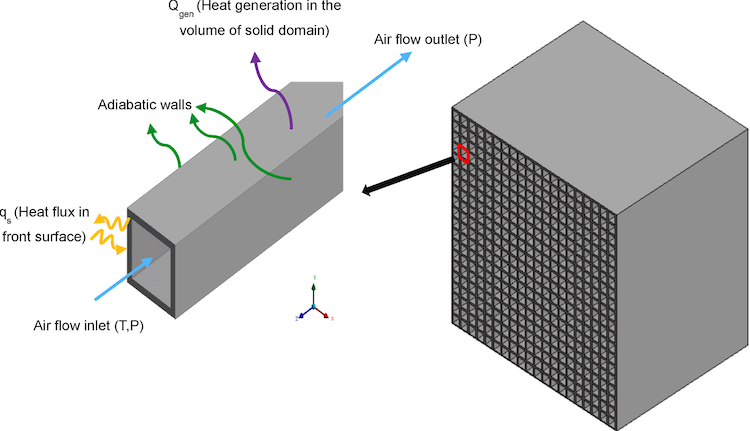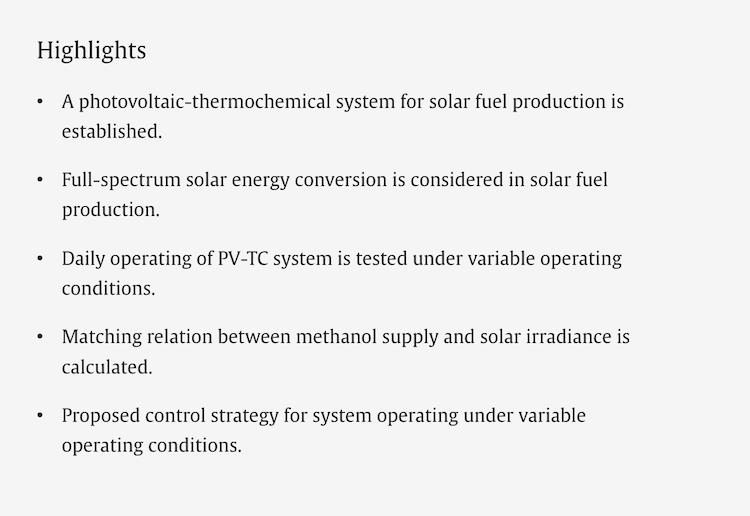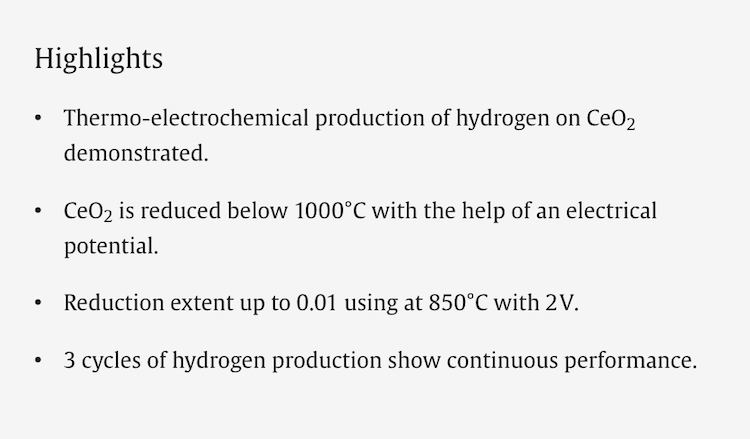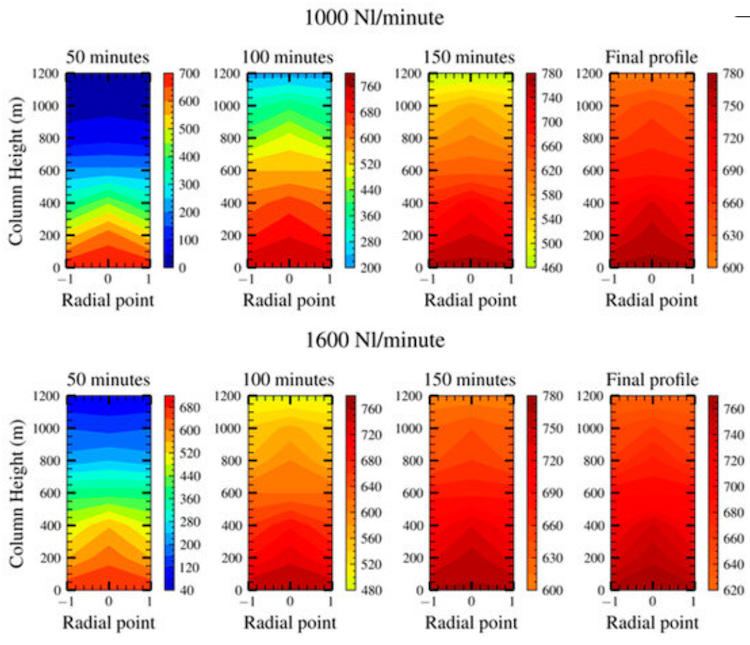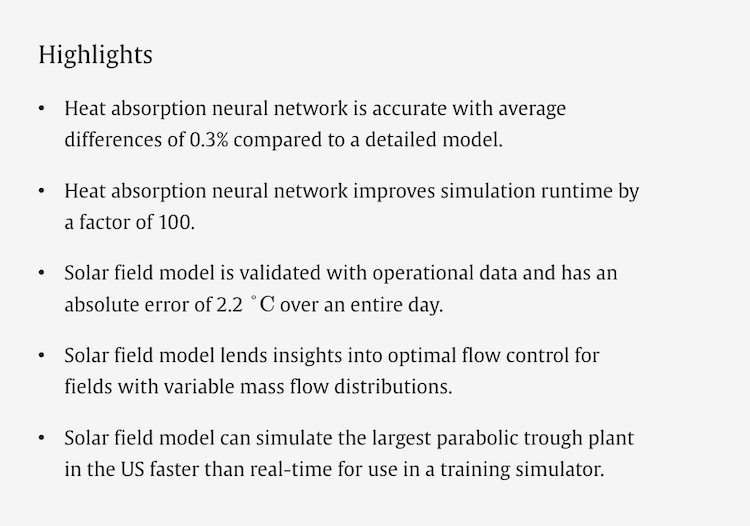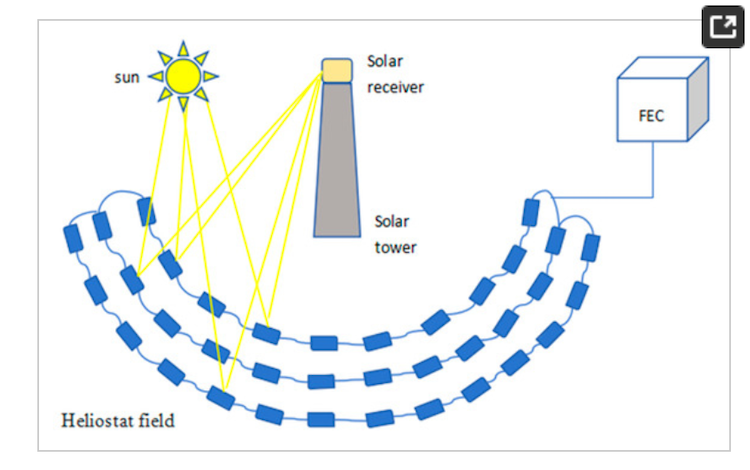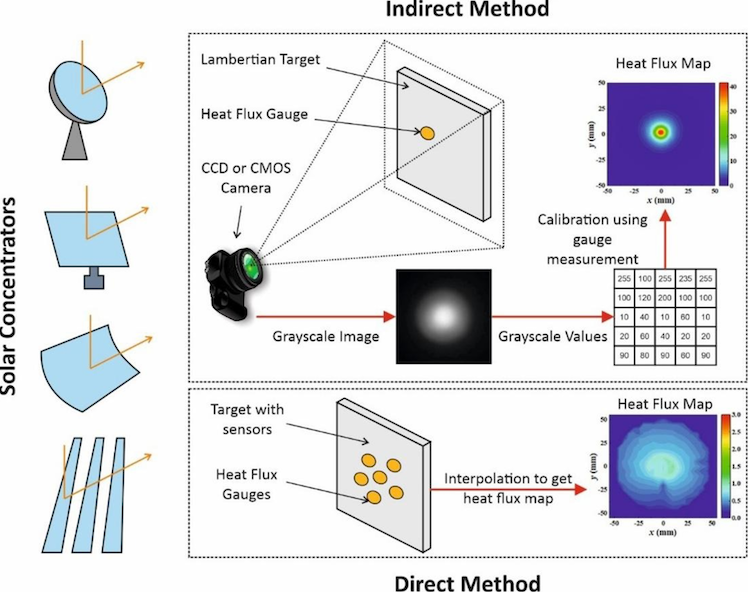Abstract Honeycomb volumetric solar receivers have emerged as promising candidates for concentrating solar power applications because of their thermal and mechanical properties, enabling the efficient heating of fluids. Despite their potential, challenges remain in optimizing channel design and operating conditions to enhance thermodynamic performance. This study identifies design and operating configurations that maximize the thermodynamic …
Published at Applied Energy – Enhancing solar tower competitiveness with star-shaped receivers
Abstract Star-shaped receivers represent a novel receiver concept to increase performance and reduce cost of solar tower plants, boosting the competitiveness of these renewable and dispatchable power production technology. This article presents a comprehensive analysis of star-shaped receivers, which, due to their unique geometry, provide lower optical and thermal losses, increased lifetime, and reduced construction …
Published at Applied Thermal Engineering – Daily operation and regulation of a photovoltaic-thermochemical hybrid solar system for full-spectrum solar fuel production
Abstract: Facing the challenges of energy crisis and climate change, solar-to-fuel is recognized as a promising approach to promote renewable energy as an alternative to fossil energy. We have proposed a solar-to-fuel system that adopts the spectral beam splitting method to couple photovoltaic and thermochemical conversions, enabling the simultaneous production of electricity and solar fuel …
Published at International Journal of Hydrogen Energy – Thermo-electrochemical hydrogen production based on ceria
Abstract Two-step thermochemical cycles are efficient for producing H2 with solar energy, however, they face challenges with thermal losses at high temperatures needed for metal oxide reduction. This study introduces the first experimental demonstration of a thermo-electrochemical cycle for water splitting using ceria (CeO2). By applying electrical potential CeO2 is reduced at temperatures under 1000 …
Published at MDPI – Numerical and Experimental Study of Packed Bed Heat Transfer on the Preheating of Manganese Ore with Air up to 600 °C
Abstract This work studies heat transport in the fluid–solid interface of a packed bed to demonstrate the feasibility of preheating lumpy manganese ores to 600 °C with air at 750 °C. Preheated manganese ores aim to reduce furnace energy consumption during smelting in submerged arc furnaces to produce manganese ferroalloys. The preheating process was experimentally …
Published at Solar Energy – Neural-network-driven dynamic simulation of parabolic trough solar fields for improved CSP plant operation
Abstract: Concentrating Solar Power plants face challenges in achieving and sustaining high performance levels partially due to complexities in plant operations. This study addresses these challenges by developing a computationally efficient, high-fidelity parabolic trough solar field model capable of emulating CSP plant dynamics for use as an operator training simulator and as a tool for …
Published at MDPI – Transformative Impacts of AI and Wireless Communication in CSP Heliostat Control Systems
Abstract: In this review, the transformative impact of integrating artificial intelligence (AI) and wireless communication technologies into the heliostat control systems of concentrated solar power (CSP) plants are explored. Heliostat control systems are categorized based on wired and wireless implementations, and calibration methods are analyzed from traditional methods, auxiliary equipment, and AI in detail. The …
Published at Nature – Artificial intelligence models development for profitability factor prediction in concentrated solar power with dual backup systems
Abstract: Hybrid concentrating solar power (CSP) plants with thermal energy storage (TES) and biomass backup enhance solar energy reliability and efficiency. TES provides energy during low sunlight or high demand, while biomass provides continuous heat generation when TES is depleted. Therefore, the current study developed three tree optimizers (fine, medium, and coarse) to predict the …
Published at Applied Energy – An efficient ordered conversion system for hydrogen and electricity cogeneration driven by concentrated solar energy
Abstract Efficient utilization of full-spectrum solar photons is significant for improving the efficiency of solar energy conversion and thus alleviating energy shortage. In this work, a novel concentrated ordered conversion system based on a parabolic trough collector (PTC) that couples photocatalysis and Rankine cycle for hydrogen and electricity cogeneration to more efficiently use the full-spectrum …
Published at Solar Energy – Advancements, challenges, and opportunities in the measurement of high heat flux for concentrated solar thermal systems
Abstract Concentrated solar thermal (CST) systems, capable of driving high-temperature processes up to 2000 K, hold significant potential for chemical and industrial applications. This paper reviews methods for measuring concentrated solar flux, focusing on their role in calculating key optical performance metrics such as concentration ratio and optical efficiency. It also explores the challenges associated …


